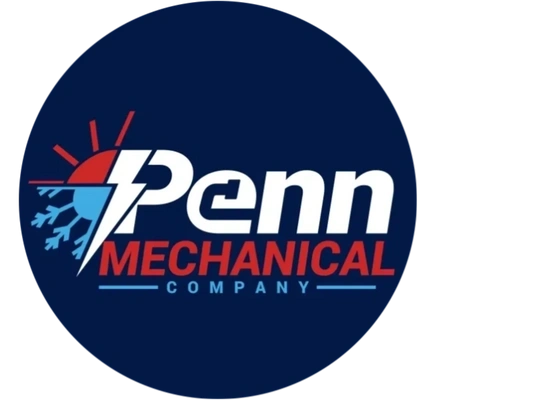Mini-Splits Maintenance
Mini-Splits Maintenance in Berks County, Pennsylvania — Keep Ductless Cooling Quiet, Clean & Consistent
A mini-split should feel invisible—set the temp, and the room simply stays comfortable. Over time, though, dust films the coil, the fan wheel collects grime, and the drain pan grows biofilm. That’s when the clues appear: a musty puff at start-up, a head that drips, ice on the lines, or a zone that runs longer but cools less. Left alone, those small issues drive up bills and shorten equipment life.
Penn Mechanical services ductless systems the way they’re built—head by head, zone by zone—deep-cleaning airflow paths, restoring drainage, and verifying the inverter system with real measurements. The result is quieter operation, faster cool-down, and steadier comfort.
Why Mini-Splits Need Different Care
Each indoor unit is its own tiny air handler. Unlike central A/C, all the air passes right over a compact coil and a high-speed squirrel-cage fan. A little buildup here makes a big difference: airflow drops, moisture lingers on the coil, and odors or leaks follow. Proper maintenance targets those exact parts instead of a quick filter rinse and a looks good.
- BBB A+ Rated
- owner over 30 years business
- 100% Satisfaction Guarantee
- Fully Licensed & Insured
- On-Time Guarantee
- Upfront Pricing
Signs You’re Due for Service
- Musty or gym sock smell when the head starts
- Water spots under a unit or intermittent drips
- Frost on the small copper line or frequent defrosting
- One room never matches its setpoint, or cools very slowly
- New noises: chirping/grinding at the head, buzzing outside
- A utility bill jump without hotter weather to blame
Two or more of these? It’s time for a professional clean and tune.
What Our Mini-Split Maintenance Includes:
Deep Clean of Indoor Heads
We remove the front cover, wash the filters, clean the coil, and de-gunk the fan wheel using a containment bib to protect walls and floors. We sanitize the drain pan and clear the condensate line; if there’s a pump, we clean and test it. This is the #1 fix for odors, leaks, and weak airflow.
Performance & Airflow Verification
After reassembly, we confirm discharge temperature, fan speed response, and louver swing so the air actually reaches the occupied area. We inspect line-set insulation and wall sleeves to prevent sweating and heat gain.
Inverter/ Refrigerant Health Check
We verify operation by manufacturer method (target superheat/subcooling or equivalent), check for leak indicators or oil staining, and record compressor and fan amp draws to spot weak components early.
Controls, Comfort & Connectivity
We validate the temp sensor (in-head vs. remote), review mode use (Cool/Dry/Auto), set quiet/sleep profiles, and confirm Wi-Fi/app control where equipped.
Outdoor Unit Service
We gently rinse the coil, clear 2–3 feet of airflow, confirm stand height/clearances, and check electrical connections and surge protection.
You get a short report with key readings (delta-T, amps, pressures/targets), what we cleaned, and any prioritized fixes.
Benefits You’ll Notice
Cleaner heads move more air with less noise. Coils dry properly, so odors disappear and humidity control improves. Clear drains stop leaks and fault codes. Documented settings keep the inverter in its efficient range, which means lower run time and steadier bills.
Simple Care Calendar
- Filters: rinse every 4–8 weeks during heavy use (more often with pets/cooking).
- Pro Service: annually for cooling-only systems; twice yearly if your mini-split heats and cools.
- Mid-season rinse: if cottonwood/pollen blankets the outdoor coil, a gentle hose-off helps.
Tips Between Visits
Keep curtains and shelves out of the head’s throw, avoid tightly covering the outdoor unit (it must breathe and defrost), and use DRY mode on clammy days to lower humidity without over-cooling. If a head drips, shut it off and call—running it can push water into the wall.
Multi-Zone Details We Check
In multi-zone systems, we confirm capacity balance so one head doesn’t starve another, verify addressing/communication, and align schedules so zones cooperate instead of fighting.
Frequently Asked Questions
Nearly always—cleaning the fan wheel, coil, and pan removes the biofilm that causes smells.
Yes—we verify performance by measurement (target superheat/subcooling or the model’s specified method), not guesswork.
Most single-zone services finish in about 60–90 minutes. Multi-zone systems vary with head count and condition.
Absolutely—we maintain wall, floor, ceiling cassette, and slim-duct heads across major brands.
Why Penn Mechanical
- Ductless-specific deep cleaning (including the fan wheel) with proper containment
- Measured commissioning we document airflow and inverter performance
- Brand-agnostic techs and tidy workmanship
- Up-front, flat pricing you approve before we begin
- Most services are done in one visit, with a clear report, you can keep
Ready to Make Every Head Feel Like New?
Tell us which room struggles—musty, dripping, or never quite cool—and we’ll tailor a mini-split maintenance visit that fixes the cause, not just the symptom. Prefer to chat first? Call 484-877-8864, and a Penn Mechanical ductless specialist will set up your service.
